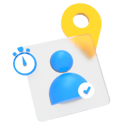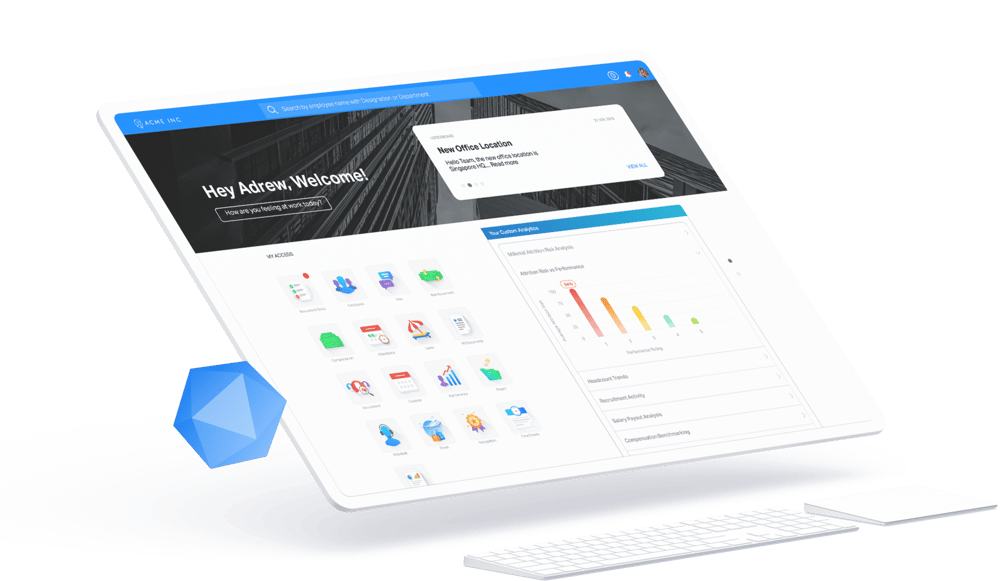HR System Software | Malaysia One HRMS Platform, Limitless Possibilities
✨Ideal for Enterprises with 200+ Employees✨
With Darwinbox, the cutting-edge, mobile-first HRMS suite for businesses, you can achieve HR excellence more quickly and intelligently. Improve workplaces by automating HR operations, streamlining interactions, and gaining meaningful insights. Discover Darwinbox's power right now!
900+
Enterprises
2.5 Million+
2.5 Mn+
Employee
130+
Countries
900+
Enterprises
492k+
Interviews Scheduled
140+
Offer Letters Generated
130+
Offer Letters Accepted
Take A Darwinbox Product Tour
Take a Product Tour
Join our growing list of customers
900+ Enterprises Are Saving Time and Boosting Productivity With Darwinbox
Darwinbox genuinely listened to our needs from an experience and systems standpoint. We really appreciate this level of customer-centricity as an organization, because it is one of the key enablers at JG Summit as well, and it's great to share that value with a partner.

Guly Go CHRO Gokongwei Group
We wanted our people to grow at the same pace as our business and needed the flexibility to do most of the HR functions by ourselves. With Darwinbox, we could achieve that because it is intuitive and so easy to use.

Tri Anggoro CHRO STP Tower
Turning to Darwinbox Helpdesk has helped us automate our processes, plug the gaps, and create a streamlined process. The spare bandwidth has helped us take up initiatives to support the business and create a refined employee experience.

Izzat Jamal Head of People and Transformation Socar
Our CEO is paying attention too. I can see him engaging on the Vibe posts that come up. To see that posts are getting that kind of visibility sends a clear message to the employees and really promotes the kind of culture we want to build. It encourages others to recognize their peers, and I can see this happening across teams and even across geographies.

NICOLE POON HEAD HR MATCHMOVE
Refreshing to see a HRMS software which is simple, intuitive and easy to navigate. We wanted technology to work for us and make our processes more robust. The platform provided us the flexibility to build modules customized to our internal requirement.

Sohini Dutt Director & Head of Human Resources Nivea
Go truly Mobile!
Embrace #MobileFirst Transformation and empower your organization with our web applications on mobile. Improve accessibility of information for employees while increasing speed, efficiency, and convenience. At any time, everywhere, stay informed and connected. Come on over and join us!
Manager View
- Check the reportee's daily check-ins and work progress.
- Fulfil your obligations and accept or deny requests.
- View, alter, and accept goal plans.
- Analyze the reportees and give prompt feedback.
- Accept offer letters, keep track of applicants' progress, and give interview ratings.
Employee View
- Search that is voice-activated globally.
- Daily Clock In/Out (with Facial Recognition and Geotagging).
- View tax documents, HR communications, pay stubs, and company policies.
- Continuous feedback and performance management for mobile platforms.
- OCR receipt scanning for tracking expenses.
- One-click actions and smooth task management.
Recognized by Industry Analysts and Leaders
Could Darwinbox Become The Next Workday?
Josh Bersin, Global Industry Analysts & CEO of The Josh Bersin Company
The great thing about Darwinbox is that it enables employees and employers to be productive and impactful as they can be
Jessica Neil, ex-CHRO Netflix
FAQs
HR professionals use various software solutions to streamline their processes and enhance efficiency. Some commonly used software in the field of HR include:
Human Resource Information System (HRIS): HRIS software helps manage employee data, track employee attendance, automate payroll processes, and store important HR-related documents.
Applicant Tracking System (ATS): ATS software is used to streamline the recruitment and hiring process by tracking job applications, managing candidate databases, and facilitating communication between recruiters and candidates.
Learning Management System (LMS): LMS software enables HR departments to create, manage, and deliver employee training programs and track employee progress and performance.
Performance Management Software: Performance management software assists in setting employee goals, conducting performance appraisals, providing feedback, and tracking performance metrics.
Time and Attendance Software: Time and attendance software helps HR departments track employee working hours, manage time-off requests, and ensure accurate payroll calculations.
Employee Engagement Software: Employee engagement software focuses on improving employee satisfaction, productivity, and retention by facilitating communication, recognition, and feedback within the organization.
Benefits Administration Software: Benefits administration software simplifies the management of employee benefits programs, including health insurance, retirement plans, and other employee perks.
Onboarding Software: Onboarding software streamlines the process of welcoming new employees, facilitating the completion of necessary paperwork, and providing necessary training and resources for the new joinees.
These are just a few examples of the software solutions commonly used by HR professionals, and the specific software used may vary based on the organization's needs and preferences.
The four key HR systems commonly referred to in the field of Human Resources are:
Human Resource Information System (HRIS): HRIS is a comprehensive software system that centralizes and manages employee data, including personal information, employment history, benefits, and performance data. It provides a foundation for various HR processes and enables efficient data management and reporting.
Talent Management System (TMS): TMS focuses on attracting, developing, and retaining talent within an organization. It encompasses various modules such as recruitment, onboarding, performance management, learning and development, and succession planning.
Payroll Management System (PMS): PMS automates and streamlines payroll processes, including salary calculations, tax deductions, benefit deductions, and generating payslips. It ensures accurate and timely payment to employees and compliance with payroll-related regulations.
Learning Management System (LMS): LMS is a software platform that facilitates the creation, delivery, and tracking of employee training and development programs. It allows organizations to manage and deliver both online and instructor-led training, track employee progress, and assess training effectiveness.
These four HR systems work together to support various HR functions, including employee data management, talent acquisition and management, compensation management, and employee development and training.
Darwinbox is an example of an HR system. Darwinbox is a cloud-based HR platform that provides a wide range of HR functionalities such as employee data management, attendance and leave management, payroll processing, performance management, talent acquisition, and learning and development. It offers a unified and intuitive interface for managing various HR processes and enables organizations to automate and streamline their HR operations effectively. Darwinbox is known for its user-friendly design, scalability, and comprehensive set of features tailored to meet the needs of modern HR management.
The HR lifecycle consists of several interconnected cycles that encompass various stages and activities in the field of Human Resources. While different models may have slight variations, here is a commonly recognized breakdown of the seven cycles of HR:
Recruitment Cycle: This cycle involves sourcing, attracting, and selecting suitable candidates for job openings within the organization.
Onboarding Cycle: The onboarding cycle focuses on orienting and integrating new employees into the organization, providing them with necessary training, resources, and introductions to their roles and the company culture.
Performance Management Cycle: This cycle includes setting performance goals, conducting regular performance reviews, providing feedback, and recognizing and rewarding employee achievements.
Learning and Development Cycle: This cycle encompasses identifying training needs, designing and delivering training programs, and evaluating their effectiveness to enhance employee skills and knowledge.
Compensation and Benefits Cycle: This cycle involves designing and administering compensation structures, managing employee benefits programs, and ensuring fair and competitive compensation practices.
Employee Relations Cycle: This cycle focuses on maintaining positive employee relations, addressing conflicts or issues, ensuring compliance with labor laws, and fostering a healthy work environment.
Offboarding Cycle: The offboarding cycle covers the process of managing employee exits, conducting exit interviews, handling necessary paperwork, and facilitating knowledge transfer or succession planning.
These cycles represent the major stages and activities that HR professionals typically engage in throughout the employee lifecycle in an organization.
Location - India | USA | Philippines | Singapore | Malaysia | Indonesia | Dubai | Thailand
Copyright © . Darwinbox Digital Pvt. Ltd. All Rights Reserved.




.png?width=690&height=800&name=2%2c3%201%20(1).png)




